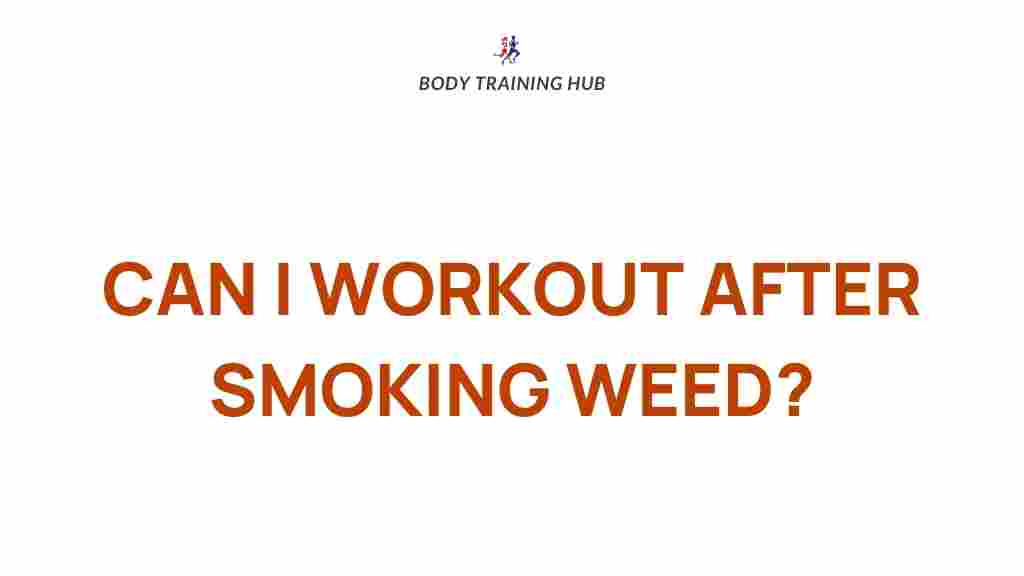Unlocking the Potential: The Impact of Cannabis on Exercise Performance
In recent years, the conversation surrounding cannabis and its relationship with exercise has gained significant traction. Athletes, fitness enthusiasts, and health-conscious individuals are increasingly exploring how marijuana can influence their performance during workouts and training sessions. This article delves into the multifaceted effects of cannabis on fitness and health, revealing the potential benefits and considerations for those looking to enhance their workout experience.
The Science Behind Cannabis and Exercise
The human body has a unique endocannabinoid system (ECS) that plays a crucial role in regulating various physiological processes, including pain, mood, and inflammation. Cannabis interacts with this system through its active compounds, primarily tetrahydrocannabinol (THC) and cannabidiol (CBD). Understanding how these compounds affect the body can shed light on their potential benefits for exercise performance.
Benefits of Cannabis for Workout and Training
When integrated thoughtfully, cannabis can offer several advantages for those engaged in regular fitness activities. Here are some key benefits:
- Pain Relief: Cannabis has analgesic properties that can help alleviate post-workout soreness and chronic pain, allowing for more effective training sessions.
- Improved Recovery: The anti-inflammatory effects of CBD can aid in recovery after intense workouts, reducing downtime and enhancing overall performance.
- Enhanced Focus: Some users report increased focus and a heightened sense of awareness, which can lead to improved concentration during workouts.
- Elevated Mood: Cannabis can enhance mood and reduce anxiety, making workouts more enjoyable and less stressful.
- Boosted Creativity: For some, cannabis can stimulate creativity, potentially leading to new workout routines or strategies.
Types of Cannabis Products for Fitness
There are various forms of cannabis available, each with its unique properties. Here’s a breakdown of the most common types:
- Flower: The traditional form, which can be smoked or vaporized.
- Edibles: Foods infused with cannabis, offering a longer-lasting effect but delayed onset.
- Tinctures: Liquid extracts that provide a quick onset of effects, ideal for those looking for fast relief or enhancement.
- Topicals: Creams or balms infused with cannabis, useful for localized pain relief without the psychoactive effects.
How to Incorporate Cannabis into Your Fitness Routine
For those considering integrating cannabis into their workout regimen, here’s a step-by-step guide:
Step 1: Know Your Goals
Determine what you hope to achieve with cannabis. Are you looking for pain relief, improved focus, or enhanced recovery?
Step 2: Choose the Right Product
Select a cannabis product that aligns with your goals. For instance, if you seek pain relief, a topical or tincture may be most effective. For mood elevation, consider low-dose edibles.
Step 3: Start Low and Go Slow
Begin with a low dose to assess how your body responds. This approach is particularly important for edibles, which can take longer to affect you.
Step 4: Timing is Key
Experiment with when to consume cannabis. Some prefer using it before a workout for focus, while others find it beneficial post-workout for recovery.
Step 5: Monitor Your Performance
Keep track of your performance and how cannabis affects your workouts. Take notes on your mood, pain levels, and any changes in your routine.
Potential Risks and Considerations
While cannabis can offer numerous benefits, it’s essential to be aware of potential risks:
- Impaired Coordination: Cannabis can affect motor skills and coordination, which may be detrimental during certain physical activities.
- Increased Heart Rate: Some strains may elevate heart rate, which could pose risks for individuals with heart conditions.
- Variable Effects: The effects of cannabis can vary widely among individuals, making it crucial to understand your body’s response.
Common Troubleshooting Tips
If you encounter issues when incorporating cannabis into your fitness routine, consider the following troubleshooting tips:
- Adjust Dosages: If you experience adverse effects, reduce your dosage or try a different strain with lower THC levels.
- Change Consumption Method: If smoking or vaping causes discomfort, explore edibles or topicals for a gentler approach.
- Consult a Professional: If unsure, speak to a healthcare professional knowledgeable about cannabis and fitness.
Real-Life Experiences: Athletes Using Cannabis
Many athletes have begun to openly discuss their use of cannabis. Notable examples include:
- Rick Ross: The rapper and fitness enthusiast has spoken about the calming effects of cannabis on his workout routines.
- Michael Phelps: While not confirmed, speculation around Phelps’ cannabis use has sparked discussions on its impact on elite athletes.
- Rachael Rapinoe: The professional soccer player advocates for cannabis use in sports, emphasizing its benefits for recovery.
Conclusion: Embracing Cannabis in Fitness
The intersection of cannabis and exercise presents a promising frontier for enhancing performance and overall health. With careful consideration of the type of cannabis, dosage, and timing, individuals can unlock its potential benefits for their workouts. However, it’s crucial to approach this integration mindfully and stay informed about the effects of different strains and products.
As the landscape of fitness continues to evolve, cannabis may play a significant role in shaping how we think about training and recovery. For those interested in exploring these options further, consider visiting this resource for more insights on cannabis and fitness. Remember to stay informed, practice moderation, and prioritize your health and well-being in your fitness journey.
For more tips on enhancing your fitness routine, check out our fitness blog.
This article is in the category Strength & Recovery and created by BodyTraining Team
